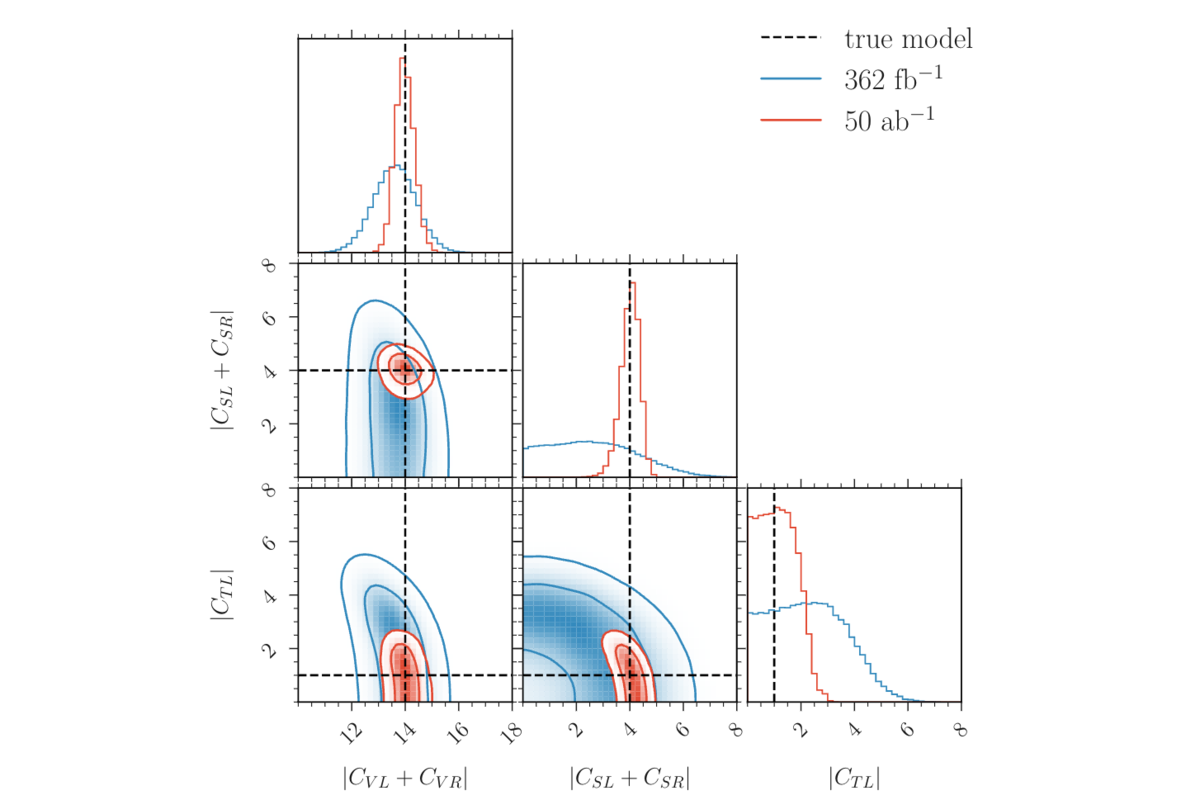New re-interpretation method for High Energy Physics
Many high-energy physics analyses target measurements of Standard Model observables. Most of these analyses feature a model dependency arising from a Standard Model assumption, making re-interpretation in terms of alternative models highly non-trivial.
Standard Model observables of rare b-hadron decays, like the branching fraction of the B+ → K+ nu anti-nu decay, are highly sensitive to the effects of many New Physics models. In order to lift the model dependency, scientists from KIT, LMU, TMU, Siegen and Durham have developed a novel re-interpretation method based on kinematic reweighting, yielding model-agnostic likelihood functions. In their paper, they illustrate how re-interpretation would work in practice, with simplified simulated data inspired from the recent Belle II B+ → K+ nu anti-nu analysis. This comes at just the right time, since Belle II’s measurement of the B+ → K+ nu anti-nu branching fraction is compatible only at 2.7 sigma with the Standard Model. Slavomira Stefkova from ETP, who is one of the authors of this phenomenological study and the original Belle II analysis, said “The question we want to answer here is: ‘Given the current data, what New Physics model would fit the data the best?’, or to ask it from a different angle: ‘Which New Physics models can we exclude?’”.
In particular, the theory space can be parametrized in terms of so-called Wilson coefficients of the weak effective theory. The simulated signal template, used for comparison against the measured data, is reweighted according to the kinematic signal distribution predicted by the alternative theory. By extending the pyhf software, which is widely used for statistical inference in high energy physics, and interfacing it with the EOS software for flavor physics phenomenology, scientists can perform a computationally efficient update of the theoretical model. This makes it possible to constrain the values of the above-mentioned Wilson coefficients, characterizing effective theories.
“This paper sets the foundation for re-interpretation using the analysis of the B+ → K+ nu anti-nu decay, but can be generalized to most analysis results which compare simulated data against real data. The main objective is to provide a tool for re-interpretation, a model-agnostic likelihood, which can be used to test any theoretical model and hence hunt for New Physics in a much more efficient way. As a bonus, with published model-agnostic likelihoods, it will also be much easier to perform experimental combinations or re-interpret measurements if the Standard Model reference is changed. We cannot wait to apply this method to real data from Belle II, so stay tuned for the future” added Slavomira Stefkova.
Contact: Dr. Slavomira Stefkova


